Dr Elliot McGucken looks at the golden ratio harmonies in the legendary Irving Penn’s fine art and fashion photography.
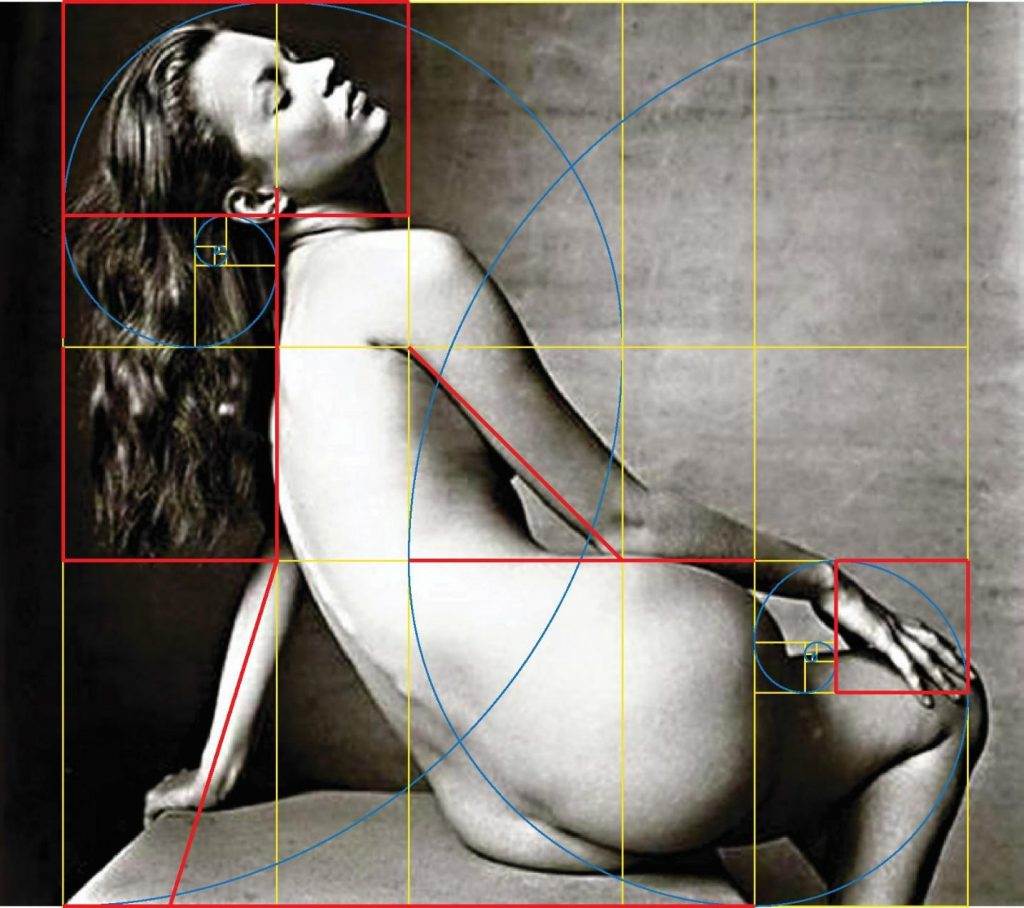
Note how the white stone forming the base of Kate Moss’s above portrait also forms the short side of a perfect golden rectangle, with the height of the photograph forming the longer side of a golden rectangle.
The ratio of the width of the white stone Kate is sitting upon to the height of the photograph is the golden ratio 1.618. Penn regularly used this proportion.
One of Penn’s masterful golden compositions.
Not so long ago, when I was once again browsing through the photography section in my favorite used bookstore in LA known as The Iliad, I lost myself for a few hours in the books devoted to Irving Penn.
When I laid my eyes upon the below photograph titled Ballet Theatre, New York, 1947, I immediately recognized the golden rectangle. And unless I missed my guess, the ballerina on the right was in the golden focal point of the rectangle’s golden spiral:
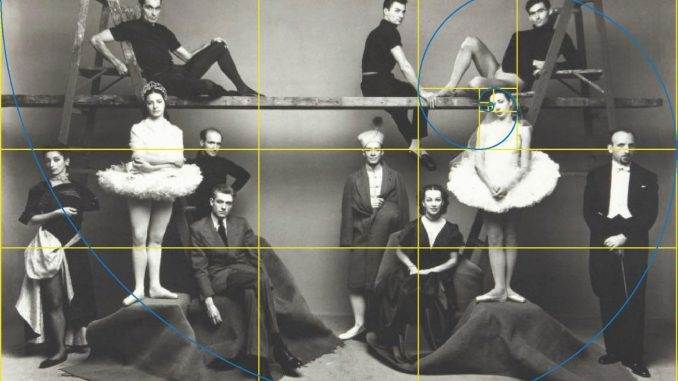
I would soon find out that the golden rectangle and all its harmonies played an integral role in the master photographer Irving Penn’s exalted compositions.
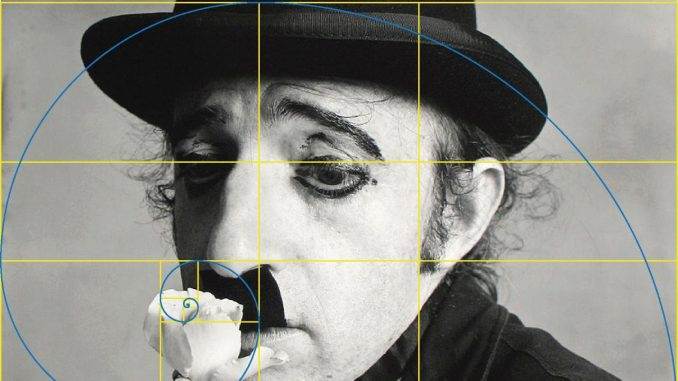
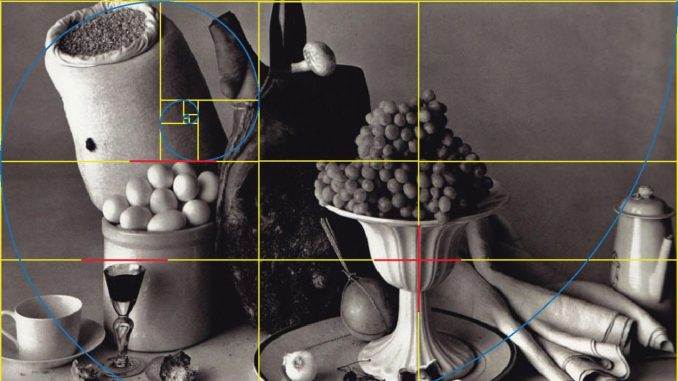
Even in his self-portrait shown below, Penn placed the camera’s face in a golden rectangle at the golden focus of the golden spiral, while keeping his face in the center column of the PHI grid, using the golden rectangle on the right of the PHI grid as a darker negative space:
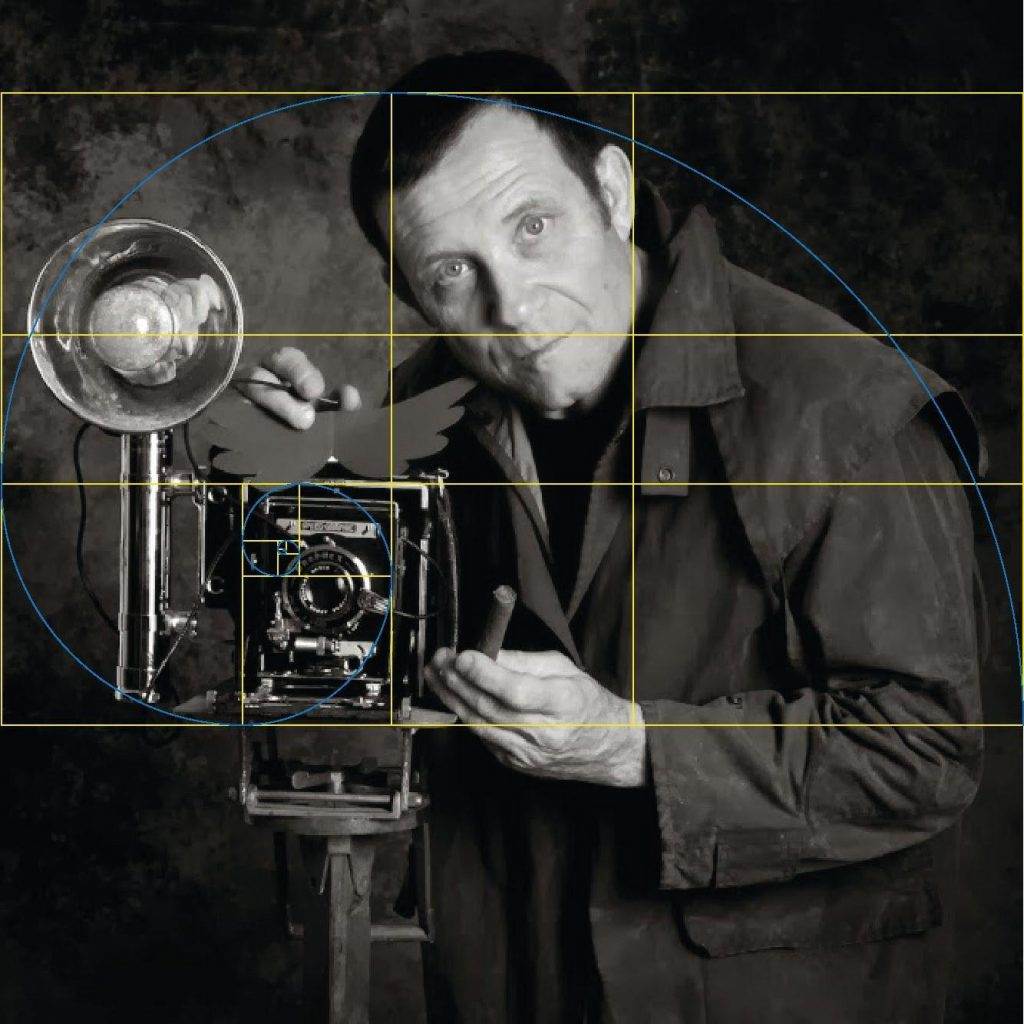
Like Michelangelo, Botticelli, da Vinci, Rubens, and Raphael before him, the legendary photographer Irving Penn used the golden ratio in the compositions of his wide-ranging masterful art, including photographs which exalted the famous portraits of Al Pacino, Truman Capote, Woody Allen, and T.S. Eliot, while celebrating the female form of goddesses including Kate Moss and Gisele Bundchen.
Originally trained in graphic design, Penn loved the golden harmonies, regularly framing his models and fine art nudes in golden rectangles.
A remarkable thing about the golden rectangle is that the focus of the golden spiral (known as an eye) is located at the major diagonal and its perpendicular reciprocal (also known as an eye), shown in red below:
And so it is that one need not draw a golden spiral to find “the eye” of the golden focus, but all one must do is draw the simple diagonals.
Just try that with the rule of thirds! How do the diagonals of the golden PHI grid know to intersect at the focal point of the golden ratio? Such are the marvels of what I deem the “golden ratio harmonies.”
When one begins composing around a simple golden rectangle, one naturally inherits a vast array of interconnected golden harmonies, ranging from golden spirals, to golden triangles, to golden rectangles, golden cuts, and more.
And the fantastic thing is that these harmonies are wed to the very harmonies of your facial features, bone structure, the leaves of trees, and the petals of flowers—the golden harmonies are foundationally wed to all that we naturally consider beautiful.
Is there any wonder great artists have composed by the golden proportions which can unite the disparate parts of a photograph in a deep, naturally beautiful harmony?
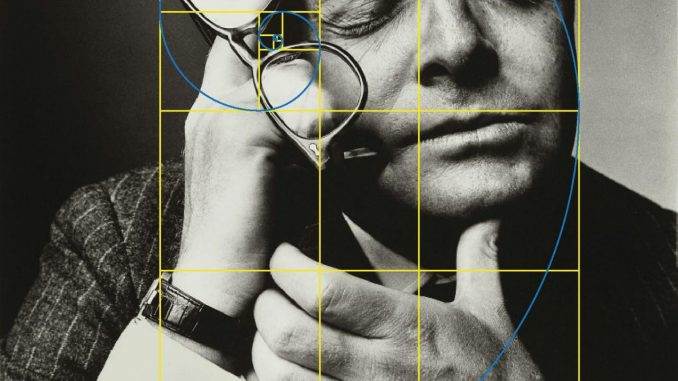
But why? Why does the golden ratio exalt beauty, I kept asking myself over the summer of 2016.
And while conducting extensive research for my book The Golden Ratio Principle (https://www.amazon.com/Golden-Number-Ratio-Principle-Compositions-ebook/dp/B01M7X55M2 ), I formulated a humble explanation, which I named The Golden Ratio Principle:
Dr. E’s Golden Ratio Principle: The golden ratio exalts beauty because the number is a characteristic of the mathematically and physically most efficient manners of growth and distribution, on both evolutionary and purely physical levels.
The golden ratio ensures that the proportions and structure of that which came before provide the proportions and structure of that which comes after, thusly providing symmetry over not only space but time, and exalting life’s foundational dynamic symmetry.
Robust, ordered, symmetric growth is naturally associated with health and beauty, and thus we evolved to perceive the golden ratio harmonies as inherently beautiful, as we saw and felt their presence in all vital growth and life—in the salient features and proportions of humans and nature alike, from the distribution of our facial features and bones to the arrangements of petals, leaves, and sunflowers seeds.
As ratios between Fibonacci Numbers offer the closest whole-number approximations to the golden ratio, and as seeds, cells, leaves, bones, and other physical entities appear in whole numbers, the Fibonacci Numbers oft appear in the arrangement of nature’s discrete elements as “growth’s numbers.”
From the dawn of time, humanity sought to salute their gods in art and temples exalting the same proportion by which they and all their vital sustenance, as well as all the flowers and nature’s epic beauty, had been created—the golden ratio.
As the human body naturally exalts the golden ratio, as evident in classical art including Botticelli’s The Birth of Venus and the sculptures of Venus de Milo and Michelangelo’s David, it makes perfect sense that by using the golden ratio in the overarching composition of a photograph, one can unite the human subject with the greater photograph in a deeper harmony.
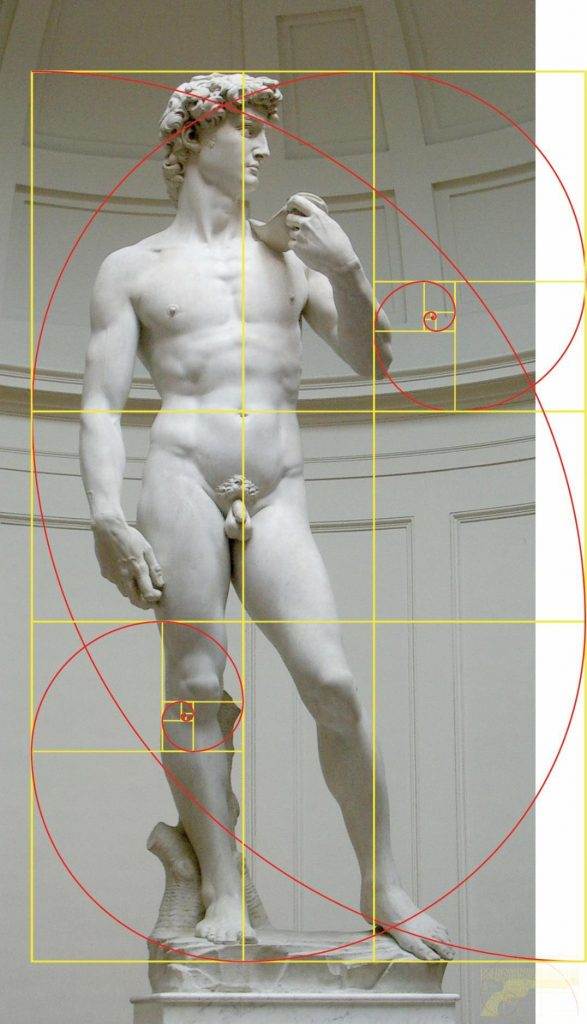
And from music, to architecture, to painting, a pleasing harmony in composition exalts the soul of a work, rendering it higher, deeper, and more subtle art.
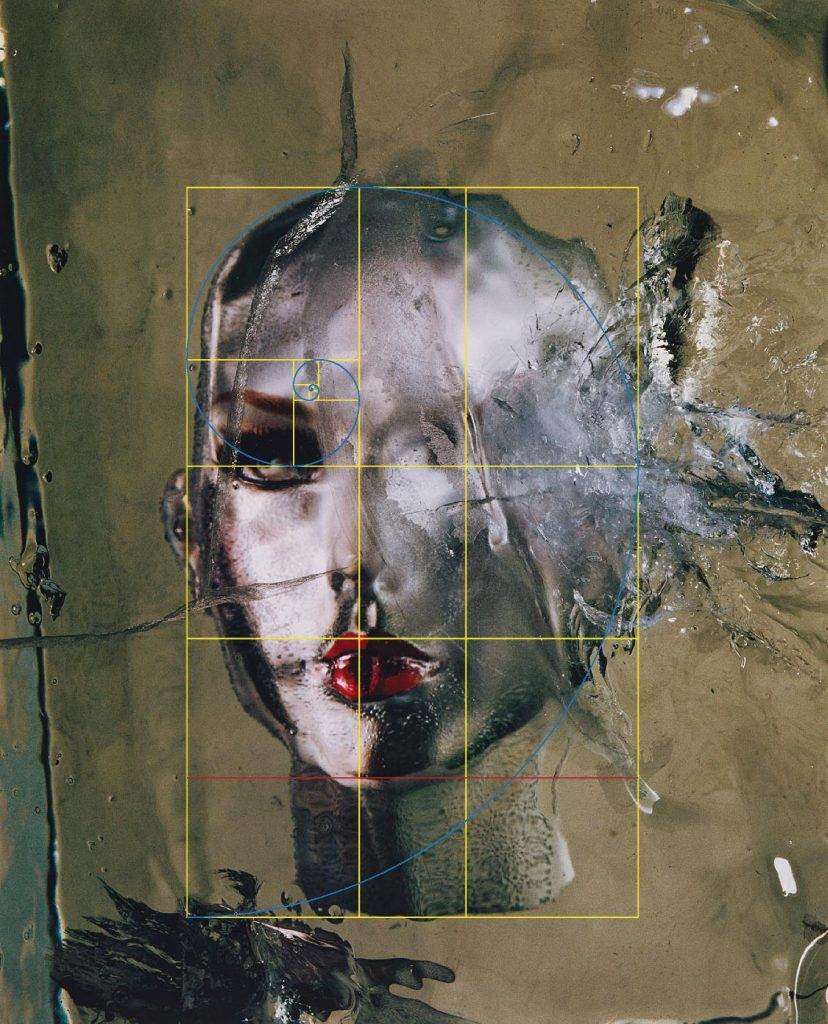
Irving Penn chose the golden rectangle composition in his more modern works too.
As seen in previous articles, the golden ratio harmonies resound throughout the epic work of master photographers including Ansel Adams, Helmut Newton, Henri Cartier-Bresson, Richard Avedon, and now, in the work of the legendary Irving Penn.
So the question then becomes, “Do you wish to exalt your photography as an art form worthy of the likes of Avedon and Michelangelo, and of Nature Herself?”
Take a few moments to study and absorb the golden ratio. Take a few moments to find it in living compositions, and you will be well on your way along your epic golden hero’s odyssey!
by Dr. Elliot McGucken
The Golden Ratio in the Legendary Helmut Newton’s Fine Art and Fashion Photography
https://www.apogeephoto.com/the-golden-ratio-in-the-legendary-helmut-newtons-fine-art-and-fashion-photography/
Richard Avedon, Henri Cartier-Bresson and Golden Ratio Compositions
https://www.apogeephoto.com/richard-avedon-henri-cartier-bresson-and-golden-ratio-compositions/

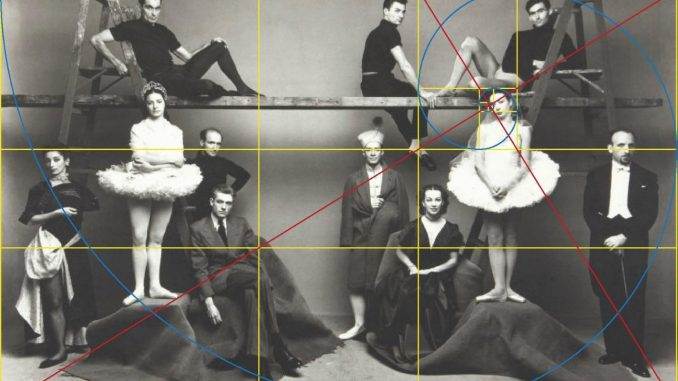
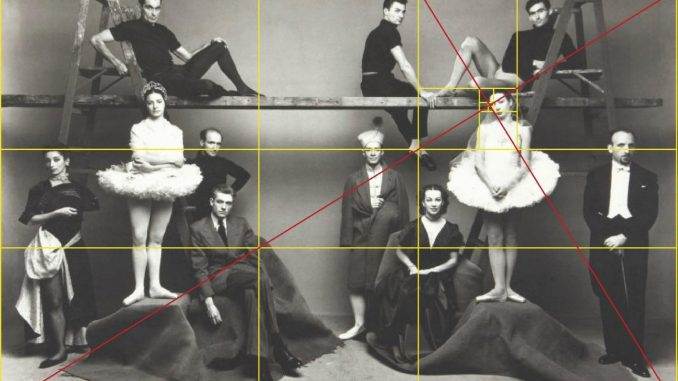

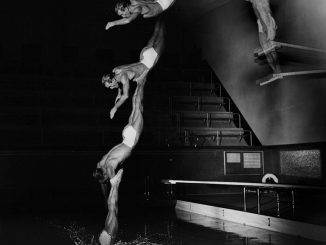

Leave a Reply